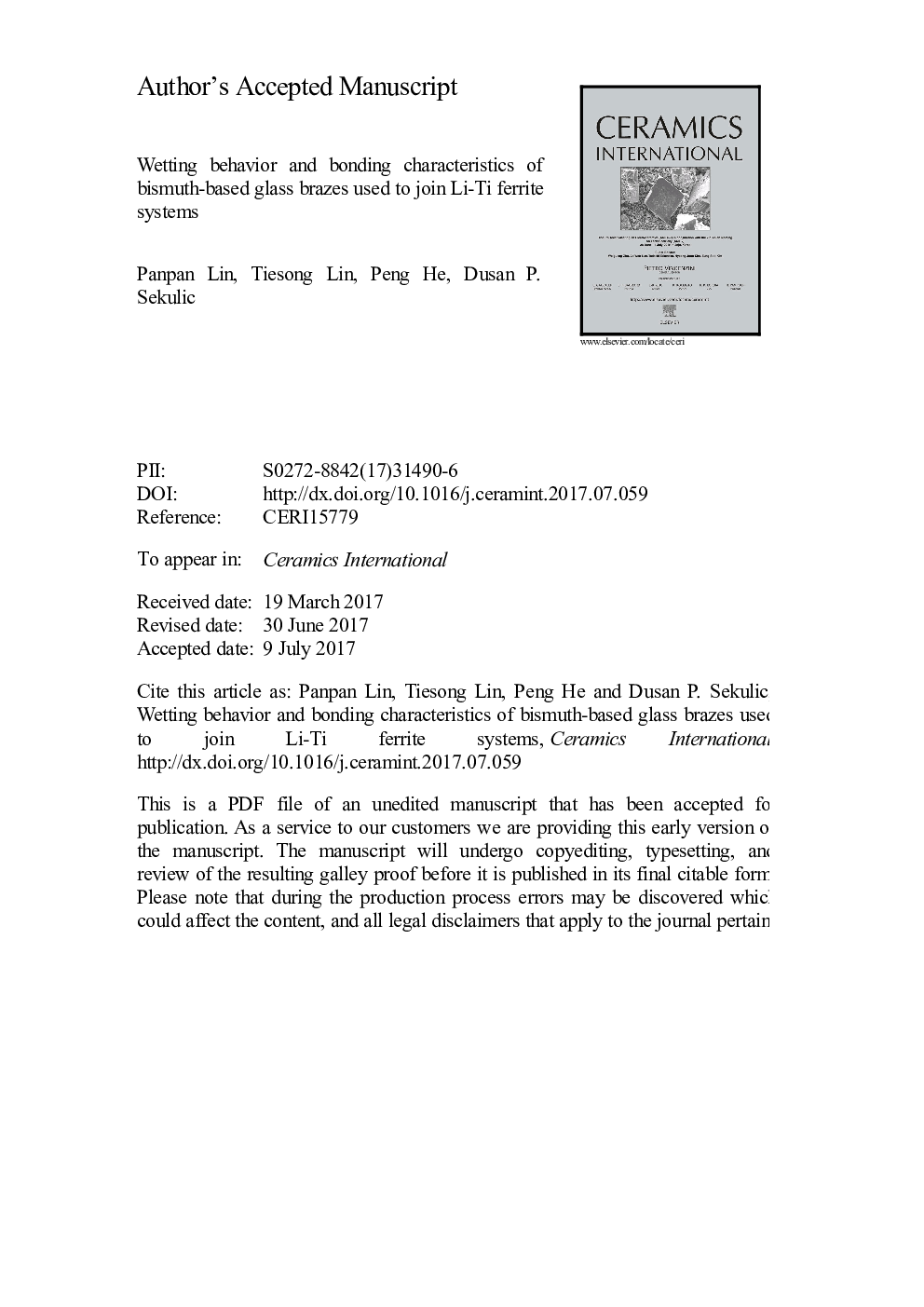| Article ID | Journal | Published Year | Pages | File Type |
|---|---|---|---|---|
| 5437855 | Ceramics International | 2017 | 42 Pages |
Abstract
A series of bismuth-based glass brazes were used to join Li-Ti ferrite. The wetting behavior and bonding characteristics of glass brazes utilized to join Li-Ti ferrite were systematically investigated. The glass brazes feature a good CTEs match, and a favorable wetting ability over Li-Ti ferrite mating surfaces. Upon brazing, the Bi-rich phases (Bi46Fe2O72, Bi12SiO2 and Bi24B2O39) and Zn-rich phase (ZnO) were observed in the Li-Ti ferrite/Bi40 and Li-Ti ferrite/Bi35 joints. The Zn2SiO4, ZnFe2O4 and Bi5Ti3FeO15 whiskers were detected in the Li-Ti ferrite/Bi25, Li-Ti ferrite/Bi20 and Li-Ti ferrite/Bi25-BC joints, respectively. No crystalline phase was detected in the Li-Ti ferrite/Bi30-BF joint. Multiple factors impact the joint strength, such as the three-point bending strength of glass brazes, the CTE match of the glass braze and the Li-Ti ferrite, as well as the crystal phases within the seam. The joint strength has the maximum value of 86Â MPa for a Li-Ti ferrite/Bi25-Ba couples. The main impact is attributed to the strengthening effect of Bi5Ti3FeO15 whiskers. The dielectric properties of Li-Ti ferrite/glass braze joints show a stronger frequency dependence than that of Li-Ti ferrite at low frequency. This is attributed to the formation of new interfaces. The glass matrix or a crystal phase with a higher dielectric constant could counteract the decrease in the dielectric constant of heat-treated Li-Ti ferrite. Therefore, the dielectric constant of joint, especially that of Li-Ti ferrite/Bi25-BC joint, would be near that of the original Li-Ti ferrite at a high frequency. Meanwhile, no increase in the dielectric loss tangent of a joint takes place.
Related Topics
Physical Sciences and Engineering
Materials Science
Ceramics and Composites
Authors
Panpan Lin, Tiesong Lin, Peng He, Dusan P. Sekulic,
